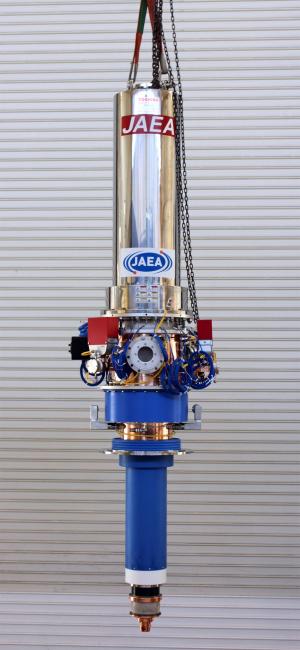The plasma starter
19 Feb 2015
-
Mark Henderson, Electron Cyclotron Section leader
Each of ITER's 24 gyrotrons will generate a microwave beam over a thousand times more powerful than a traditional microwave oven. Last month, Japan presented an advanced gyrotron design to an international team of experts and representatives from the ITER Organization.
About ten years from now, a signal from the ITER Control Room will trigger the operation of eight gyrotrons. Each gyrotron will generate a microwave beam over a thousand times more powerful than a traditional microwave oven.
These microwave beams will travel along 160 metres of waveguide and then launch into the ITER Tokamak to ionize the neutral gas and generate the very first ITER plasma, in much the same way that a spark plug ignites your car motor. The eight gyrotrons in place for ITER's First Plasma will be joined by sixteen others to initiate every plasma during operation, as well as provide heating to the plasma, drive current, and stabilize plasma instabilities.
Russia developed the first gyrotron back in 1964, generating 6W at 10GHz for continuous operation. Since then, scientists around the world have steadily increased gyrotron output power, which now approaches 2MW.
The Japan Atomic Energy Agency, in collaboration with Toshiba, manufactured the first gyrotron to demonstrate 1MW for >400 s, compatible with ITER requirements of 2006. Last month, an advanced gyrotron design was presented to an international team of experts and representatives from the ITER Electron Cyclotron Section and interfacing areas. Of four contributing parties to the 24 ITER gyrotrons (Japan, Russia, Europe, and India), Japan is the first to present its gyrotron at the final design stage. (Final design reviews for the others are planned shortly.)
The Japanese Domestic Agency Final Design Review panel included electron cyclotron scientists from the DIII-D tokamak (US), the Large Helical Device (LHD, Japan) and the ASDEX-Upgrade tokamak (Germany) along with representatives of the ITER Organization. The other Domestic Agencies involved with gyrotron development were also present at the review meeting. The panel assessed the Japanese design as mature and issued no category 1 chits.
This first Final Design Review in Japan concentrated on the gyrotron tube and assembly; a second is planned to focus on the interface with the high voltage power supply and related devices. In 2015, the Japanese Domestic Agency expects to initiate the call for tender procedure for the manufacturing of the first two gyrotrons, which will arrive on the ITER site in early 2018. These gyrotrons will then be integrated with high voltage power supplies (procured by India and Europe), transmission lines (procured by the US), and launchers (procured by Japan and Europe).


